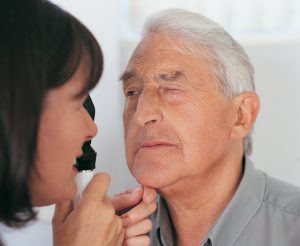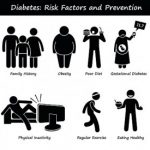 A study has explored diabetic macular edema prevalence risk factors among diabetes patients. Diabetic macular edema is the leading cause of vision loss in diabetics and the prevalence of the condition appears to be higher in non-Hispanic black patients compared to white patients. Furthermore, those who have had diabetes for longer are also at a higher risk alongside patients with higher levels of hemoglobin A1c.
A study has explored diabetic macular edema prevalence risk factors among diabetes patients. Diabetic macular edema is the leading cause of vision loss in diabetics and the prevalence of the condition appears to be higher in non-Hispanic black patients compared to white patients. Furthermore, those who have had diabetes for longer are also at a higher risk alongside patients with higher levels of hemoglobin A1c.
Nearly 347 million people worldwide have diabetes and although diabetic retinopathy is well known and talked about less is discussed in regards to diabetic macular edema.
Advertisement
A study analyzed 1,038 patients over the age of 40 where 55 had diabetic macular edema. Overall prevalence was estimated at 3.8 percent or nearly 746,000 people in the U.S. as of 2010.
The researchers wrote, “Given recent treatment advances in reducing vision loss and preserving vision in DME, it is imperative that all persons with diabetes receive early screening; this recommendation is even more important for those individuals at higher risk for DME.”
The study was published in JAMA Ophthalmology.
Diabetic macular edema causes
Diabetic retinopathy is caused by long-term high levels of blood sugar which causes the blood vessels in the eyes to become weak. When fluid leaks from these blood vessels this is referred to as diabetic macular edema. This causes the retina to swell which hinders the functioning ability of the macula which is the part of the eye responsible for sharp vision.
Diabetic macular edema symptoms and diagnosis
Diabetic macular edema often does not present itself with any symptoms but patients may notice images which appear blurry or wavy and colors may appear “washed out.”
Diagnosis of diabetic macular edema consists of a visual exam including the dilation of the eyes and a visual acuity test. Other important points to consider are if your family has a history of diabetic macular edema, have your blood sugar levels been high lately, do you have high blood pressure or cholesterol and are you taking medications for other conditions.
Diabetic macular treatment and prevention
 Injected drugs may be used as treatment for diabetic macular edema in order to stop leaking and slow the growth of new eye blood vessels. In severe cases of diabetic macular edema laser photocoagulation may be necessary which is a form of treatment where a laser is used to stop leakage of blood vessels.
Injected drugs may be used as treatment for diabetic macular edema in order to stop leaking and slow the growth of new eye blood vessels. In severe cases of diabetic macular edema laser photocoagulation may be necessary which is a form of treatment where a laser is used to stop leakage of blood vessels.
Another form of treatment is called vitrectomy which is a procedure where a doctor removes the fluid which is causing cloudy or blurry vision and replaces it with a clear solution.
Just because you have diabetes it doesn’t mean you have to develop diabetic retinopathy or diabetic macular edema. Here are some tips in order to better prevent both eye conditions from occurring to you.
- Manage your diabetes, high blood pressure or cholesterol
- Eat a healthy diet
- Lose weight
- Exercise regularly
- Get regular eye exams
By following these lifestyle habits you can better protect yourself and your vision from develop diabetic macular edema.
Related Reading:
Diabetic retinopathy eye diseases, causes, prevention and treatment
Diabetic retinopathy is an eye disease experienced by those with diabetes. Unmanaged diabetes can cause complications to the blood vessels of the light sensitive tissue in the back of the eye – the retina. Diabetic retinopathy in its early stages may be symptomless and only mild vision impairments may be noticed. This can be confused with aging and is often overlooked. Over time, if left untreated, diabetic retinopathy can result in blindness. Continue reading…
Common eye problems and diseases in aging adults
Advertisement
There are all kinds of changes that occur as the years pass, some we need to monitor more than others. Besides greying hair and wrinkling skin, there are many health worries tied to aging; one of the most important areas for concern is your eyesight. Eye problems and diseases in aging adults generally occur after the age of 50. If caught early, vision problems in older adults do not have to affect your life and you can continue to see all the world has to offer! Continue reading…
Sources:
http://media.jamanetwork.com/news-item/prevalence-risk-factors-for-diabetic-macular-edema-explored-in-study/
http://www.webmd.com/diabetes/guide/diabetic-macular-edema?page=2
